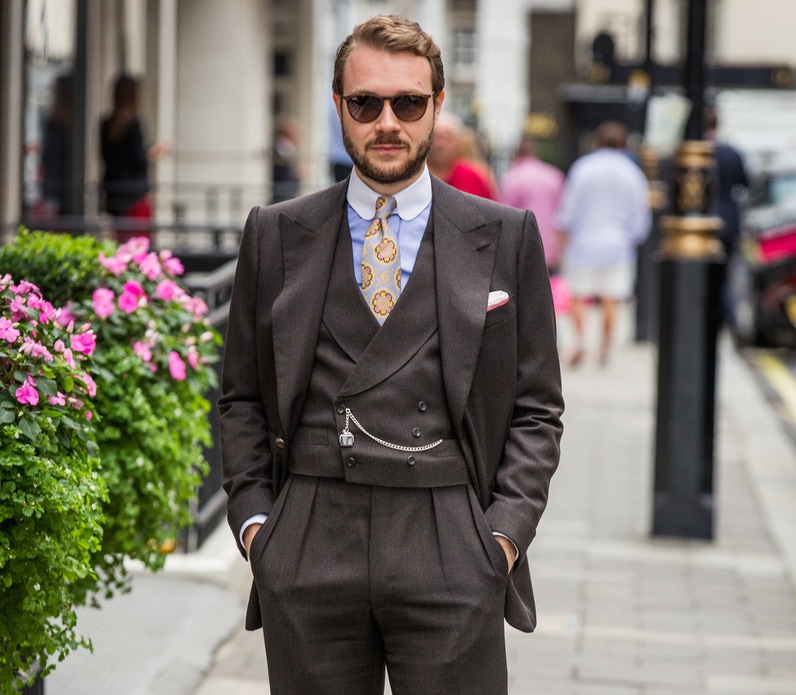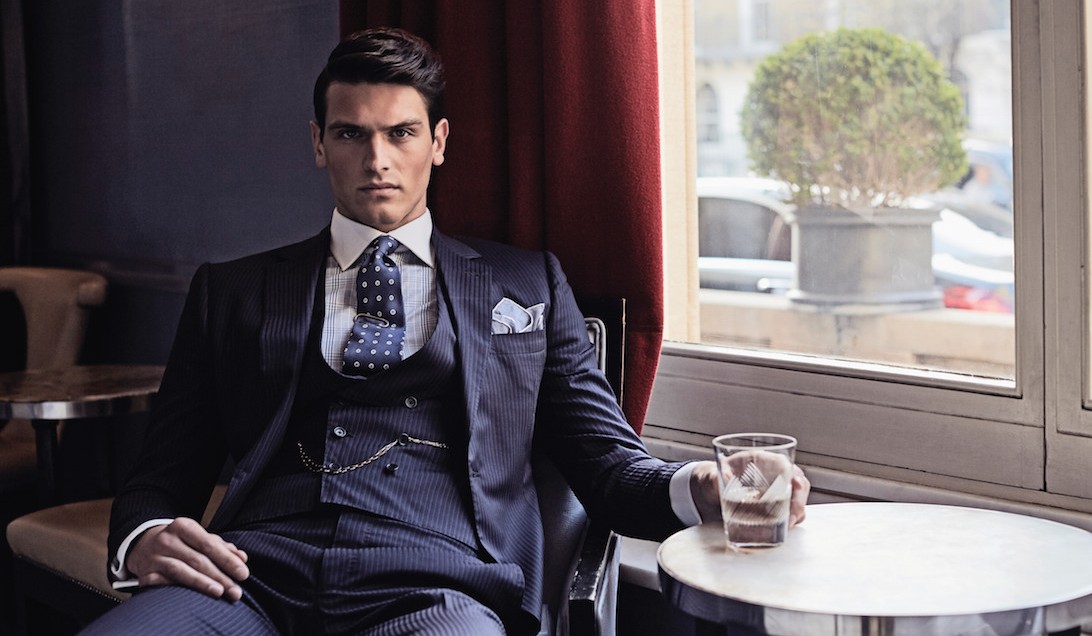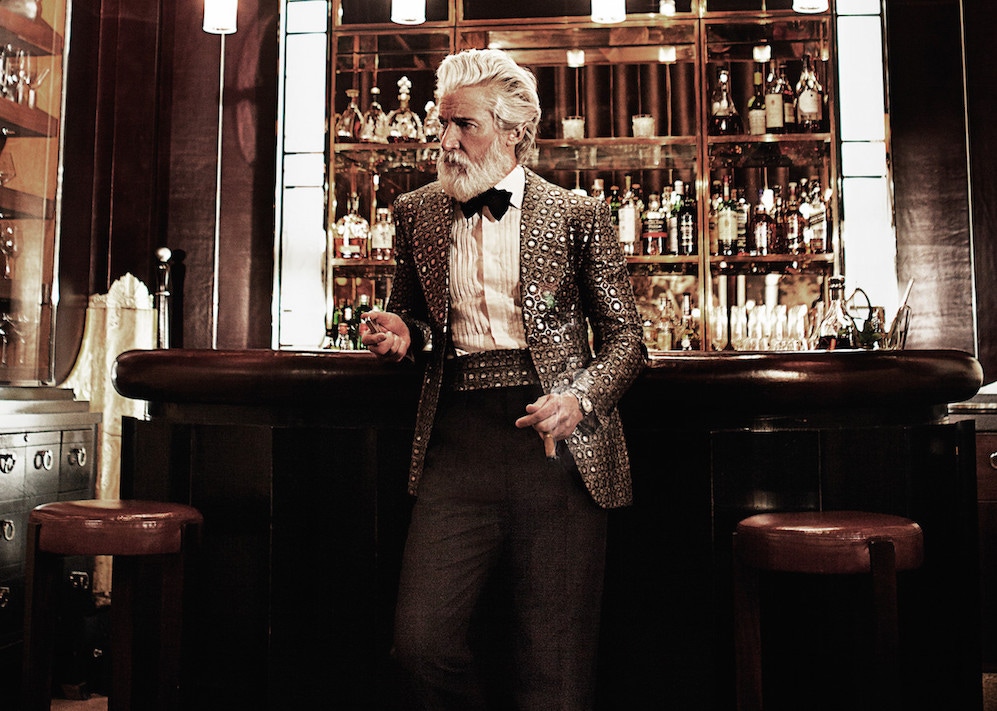Guide to Milanese Tailoring
Fabio Attanasio, commentator and prominent attorney on sartorial menswear, visits four of Milan’s famed tailoring houses to adroitly analyse the distinctive facets of Milanese tailoring, which is his first port of call in a series of appraisals in other notable tailoring meccas.

When The Rake asked me if I wanted to write a guide to Milanese tailoring, I didn't think twice before readily agreeing. And not only because I've been a faithful reader for years now and a passionate observer of classic men's style; no, my chief motivation was something else – it seemed like the perfect opportunity to delve deeper into a question that often plays on my mind: is there such a thing as the Milanese jacket? Or is it merely a variation on the theme of the Caraceni jacket? One thing is certain, the Milanese tailoring of jackets – compared to the rest of Italy – is the closest it gets to English style. This resemblance is most apparent in the extensive use of liner fabrics: canvas, horsehair, flannel for the chest, reinforcement canvas for the yoke (the so-called "spallaccio") and shoulder pads. The differences can be discerned in the cut, the style, and consequently the size, which in Milan tend to be less restrictive than your typical of Savile Row creation, although more structured than anything you are likely to find in the rest of the Bel Paese. So fasten your braces and get set for my diagnosis.
The tour kicks off by examining two jackets made by renowned tailors who carry the same surname: Augusto Caraceni and Ferdinando Caraceni. Let me just start by inviting any readers oblivious to these names to turn the page, and revel in their fused construction jackets. I'm quietly confident, however, that readers of The Rake are well versed in both general tailoring and with the clan in question, whose name is to tailoring what Ferrari is to the motor trade, what Krug is to champagne. Our next port of call was Musella Dembech, who makes jackets that break the confines of the more traditional Milanese fare, before making a final stop at Prata & Mastrale, who perhaps tailor the least recognisably Milanese jacket of the four, although retaining some of the features that allow it to be included in this guide.



Double the Caracenis and you double the pleasure – but let's take them in alphabetic order, beginning with A. Caraceni in Via Fatebenefratelli, 16. Originally from Ortona a Mare in the province of Chieti (on the same latitude as Rome, on the opposite coastline, for those of you unversed in Italian geography), there are now a number of branches in Milan and Rome. In this Mecca of Milanese bespoke tailoring, I meet Carlo Andreacchio, son-in-law of Mario, whose father Augusto founded the workshop. Carlo and his family run the atelier, which employs thirty tailors with an annual output of about 400 suits per year. He wears a blue worsted flannel blazer with six gold funnel-shaped buttons on the front. "This blazer is thirty-eight years-old, it was created in 1982," he tells me, as he shows me the delivery date sewn onto a label inside the pocket.
Carlo and his son Massimiliano are the only ones who cut for new clients, because there is a family secret to cutting, jealously guarded and handed down from generation to generation. For return customers, though, there is the so-called stroncatore, who only has to follow the model previously designed by Massimiliano or Carlo, unless - ça va sans dire - the customer's weight has changed drastically. An A. Caraceni creation is not "manufactured": "We don't work in an assembly line," explains Massimiliano. "Each and every one of our qualified tailors brings the jacket to completion, from start to finish." This allows them to oversee every single detail of their work.
The A. Caraceni style has a shoulder that is slightly wider than the client's natural measurements, with a discreetly structured chest and a jacket front that rests on the body in three crucial points: the lapel, which adheres to the chest, the armhole, which must be a perfect fit with the sleeve, and the point at the height of the pocket, which must sit on the pelvis. This complex anatomical operation of sculpting the fabric is helped by a remarkable series of tricks of the trade. Among the many, the jacket front has two vertical seams running down as far as the pocket, so as to leave the bottom unadulterated. Usually, the first one is straight and the second is curved. Here, though, both are curved, in different lengths and with different functions. The first gives shape to the chest and helps to rotate the front section, a function usually performed by a horizontal dart cut at the height of the pocket; here this technique is only adopted for clients with a more bulging belly. The second is far more curved, and serves to emphasise the waistline and sculpt the jacket. The rotation of the front quarter, however, is not only achieved with the seams, but also by a distinctive way of mounting the canvas lining in the front section: it is, in fact, slightly bias-stitched so that, thanks to some skilful ironing, the canvas pulls back the bottom of the front section, avoiding any unsightly excess fabric. On the subject of seams, there is always one under the lapel – its size depends on the client's chest measurements – which helps shape the front section usually covered by the lapel. The tip of the lapel is like an autograph: when you see that perfect olive leaf shape, you know you are looking at an authentic A. Caraceni.


The leaf-shaped peak lapel and this type of internal structure are a recurring theme in Musella Dembech, at Via Celestino IV. There is a similar story of generational handover here: a father, Francesco, a tailor from Caserta, and his son, Gianfrancesco, who after university decided to dedicate himself to the family trade, having initially started to learn about it when he was 11. Francesco worked with Donnini, in the days when they formed one half of the mythical tailoring duopoly opposite Caraceni. I got to meet the father-and-son team some time ago, when their atelier was based in the apartment in which they lived. Their former residence is now dedicated to the laboratory/showroom, which turns out around 120 suits per year, employing four full-time in-house tailors and three external ones.



It will probably sound tautological to say that Ferdinando Caraceni's jackets are... well, "Caracenian" in style. And yet even the distinction of assigning them their own adjective doesn't quite transmit the sensation their jackets provoke in me. It doesn't transmit it, because they have that certain "je ne sais quoi" allure, probably due to the detailed inclination of the collars, the meticulous width of the lapels and the venerable proportions that make it unique, effortless, soft, light. A smile lights up Nicoletta's face as she drifts off into reminiscences: "My father, looking at whatever jacket he had just created, used to say, 'Nicolé, this lapel speaks!'" The front is a classic Milanese construction, but with two short vertical seams, the first straight and the second curved, making for a clean-cut bottom which won't spoil any pattern the fabric may have.
A navy blue light wool double-breasted jacket catches my eye. The olive-leaf lapel peaks, the position of the collar, the distance between the buttons on the front: all details that suggest an eye for proportions that, in my opinion, represent the real added-value of this tailoring dynasty. Let me add another observation: perhaps the fact that the atelier has only nine tailors makes the experience even more private, artisanal, and exclusive. More genuinely Italian, let's say. The same privilege experienced by figures no less than a certain Monsieur Yves Saint Laurent, who would get his personal wardrobe outfitted here.
Craftsmanship is the underlying principle of Prata & Mastrale, an atelier founded by Aldo Invitti, a Milanese entrepreneur of Neapolitan origin. This, too is a so-called layman's tailors – Invitti is not the actual creator of his jackets. At the headquarters in via Fatebenefratelli, 17, five tailors are hard at work, including one cutter. "Cristiano has been sewing my clothes since I was eighteen," says Aldo fondly, nodding at one of his craftsmen. His jacket, although handmade in Milan by tailors born and bred in Milan, has an all-Neapolitan aftertaste, in honour of Aldo's origins.
The front is cut to have first a straight vertical seam, a horizontal seam in the pocket and a second long one, "which I don't like", Aldo is keen to underline. I must admit that I'm in agreement with him on this front, as it veers dangerously close to off-the-peg lines. To paint a more complete picture, though, I should point out that the cutter also makes jackets with a clean bottom, but he prefers the first cut, because - he says - it allows him to deliver a sprucer front which could otherwise be sullied by the excess fabric created by the horizontal seam. The Prata & Mastrale shoulder is generally not overgenerous and has no shoulder pad, and this is where the Neapolitan roots seep in. It's not always easy to reconcile the owner's taste with that of the actual tailor, but when asked about his relationship with his employees, Aldo turns to irony: "It's a bit like in a marriage – people get along better when they don't know each other too intimately."
To conclude, the four tailors put under the microscope in this guide have a few features in common: the materials they use to create the front part of the jackets, the shoulder pads, which are almost omnipresent, and the seams, which might vary somewhat depending on the style. So, back to the original question: is there such a thing as the Milanese jacket? There is no doubt that a Caraceni style exists in various shapes and forms, but the truth is that sizes and proportions – in other words, the taste of every tailor – end up influencing each creation to render it unique and inimitable.



